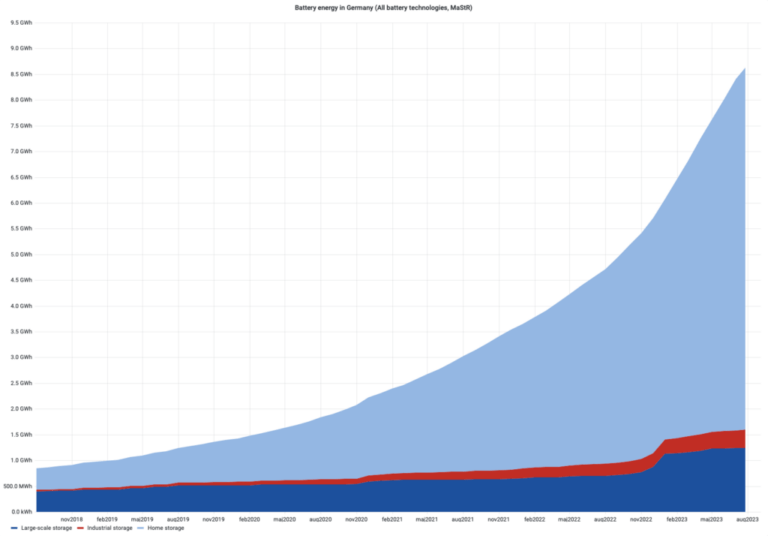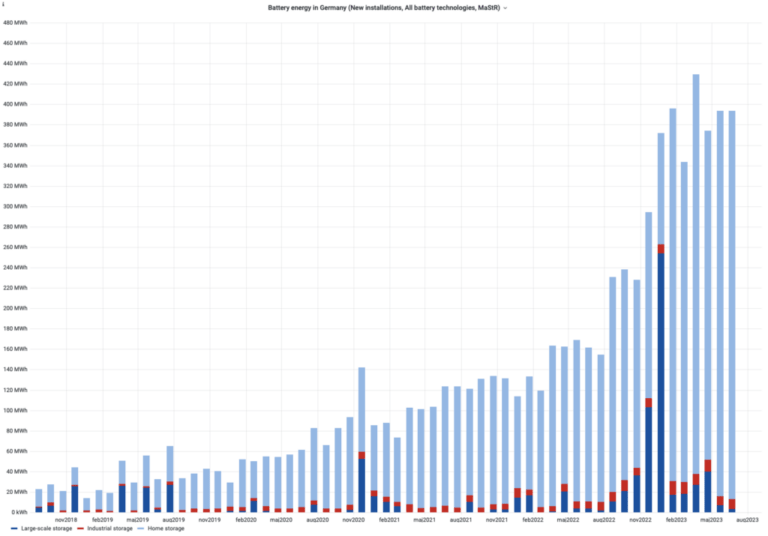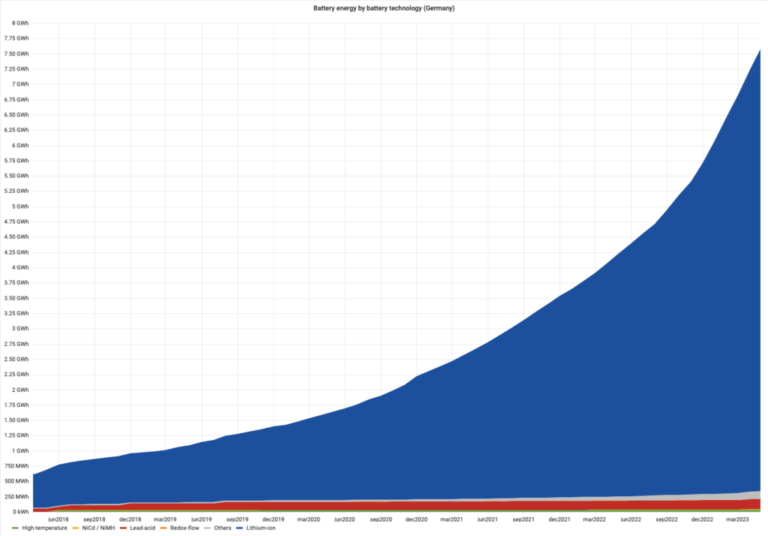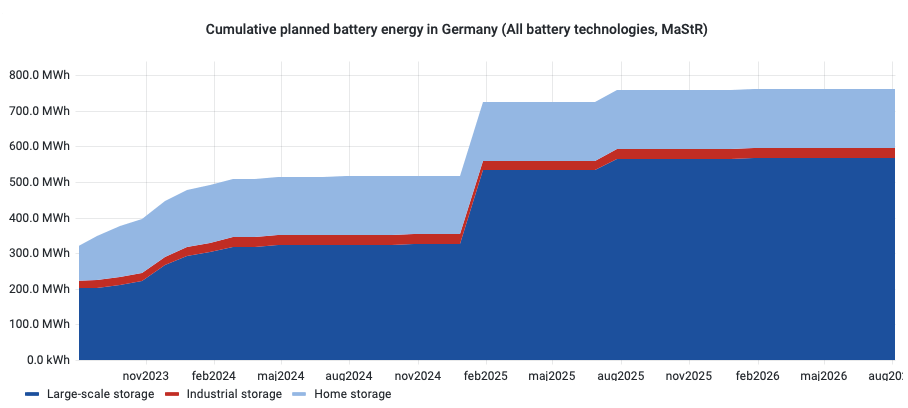
Automated evaluation of German battery storage
The Battery Charts project brings a cutting-edge website that offers an automated evaluation of battery storage in Germany using data from the German Federal Network Agency’s public database (MaStR).
This article gives a brief introduction to the different elements.
Table of Contents
German strides in battery storage
The project is developed by Jan Figgener, Christopher Hecht, and Prof. Dirk Uwe Sauer from the Institutes ISEA and PGS at RWTH Aachen University. Let’s delve into the captivating world of battery energy, power, installations, technologies, planned systems, and regional distribution.
Germany is making remarkable strides in the stationary battery storage sector, boasting several gigawatt hours of storage capacity. With its versatile applications, home storage commands most of the market, followed by industrial and large-scale storage. In comparison, national pumped-hydro storage systems total 39-gigawatt hours. Home storage systems are currently being extensively employed to enhance solar self-consumption. In contrast, industrial storage systems cater to solar self-consumption and peak shaving for businesses, along with fast-charging electric vehicles. Large-scale battery storage systems initially focused on providing primary control power but have now diversified into three emerging areas of application:
- Integrating large PV and wind farms
- Grid booster projects for grid operation management
- Optimizing energy management at large industrial sites
Battery power
Battery storage systems offer impressive flexibility, allowing charging or discharging for more than an hour at full power. The total power available is a few gigawatts, distributed proportionally to the storage energy.
Number of installations
The Federal Network Agency has registered hundreds of thousands of storage systems, primarily comprising home storage units. Industrial storage systems are also on the rise, while large-scale battery storage systems are fewer in number. Note that individual registrations with storage energy above 1,000 kWh are filtered out, as these often include unverified entries with mistaken classifications.

Addition of Batteries
The trend for new installations is on a clear upswing, driven by rising electricity prices and geopolitical events like the war in Ukraine. Consumers are increasingly seeking self-sufficiency and investing in PV systems with battery storage.
Battery Technologies
Lithium-ion batteries have taken the lead in the home and commercial storage markets, replacing lead-acid batteries over time. Large-scale storage markets initially featured diverse technologies, including lead-acid, high-temperature, and redox-flow batteries, but now, lithium-ion batteries are dominant.
Planned battery storage systems
The MaStR includes planned battery storage systems, primarily in the large-scale storage category. This prevalence is due to smaller home and industrial storage systems being reported only after installation.
Regional Distribution
Battery storage systems are scattered across Germany, with home and industrial storage concentrated in the western and southern regions. However, large-scale storage systems do not show a clear distribution pattern.

Methodology of the Battery Charts project
Battery Charts utilizes data from the German Federal Network Agency under license dl-en/by-2-0 at the website of the German Federal Network Agency https://www.marktstammdatenregister.de/MaStR. The website’s analyses are based on meticulous evaluations of individual registrations, ensuring accuracy to the best of their knowledge. The interactive figures on the website allow users to customize data selection. For those interested in more detailed insights, a publicly available dashboard facilitates data selection for individual federal states and battery technologies. The data in MaStR are manually entered, subject to specific consistency filters, and are considered highly complete for new installations.




